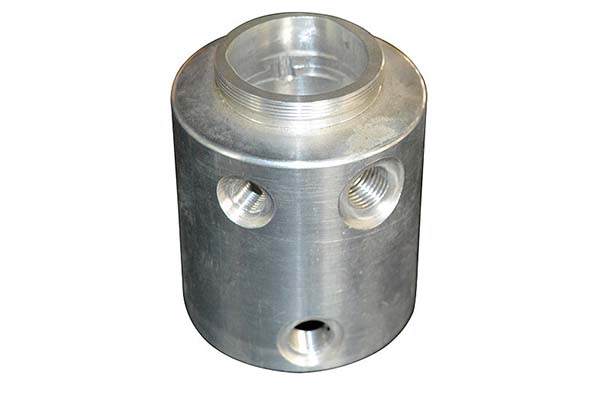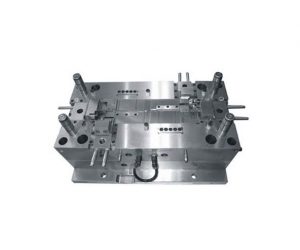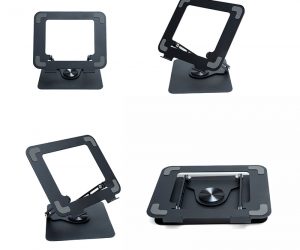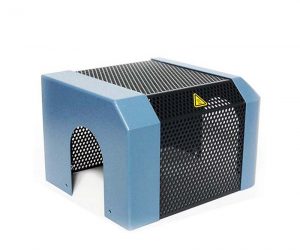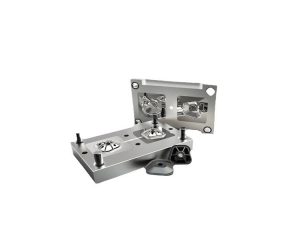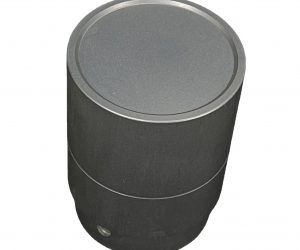1. Fundamental Mechanisms: Rotating Workpieces vs. Rotating Tools
1.1 The Physics of Turning
Turning is a machining process that is based on the principle of a rotating workpiece and a stationary cutting tool. In this setup, the workpiece is securely held in a chuck or a similar fixture and is made to rotate at a high speed. The cutting tool, on the other hand, remains stationary and is fed linearly along the axis of the rotating workpiece. This relative motion between the workpiece and the tool allows for the removal of material in a controlled manner, resulting in the creation of cylindrical shapes.
One of the key characteristics of turning is its focus on symmetry. It is highly suitable for manufacturing parts that have axial symmetry, such as shafts, bushings, and cylindrical rods. The process ensures that the outer diameter of the workpiece remains consistent along its length, achieving a high degree of concentricity. For Yigu Technology example, in the manufacturing of a stainless - steel piston rod, turning is used to achieve a concentricity within ±0.002mm. This level of precision is crucial for the proper functioning of the piston rod in an engine, as any deviation from the required concentricity can lead to issues such as uneven wear, increased friction, and reduced performance.
Turning typically employs single - point cutting tools. These can range from simple high - speed steel tools to more advanced carbide inserts or diamond - tipped bits, depending on the material being machined and the required precision. The single - point nature of the cutting tool allows for precise control over the cutting process. The tool's geometry, including the rake angle, clearance angle, and cutting edge radius, can be optimized to suit the specific requirements of the workpiece material and the machining operation. For instance, when turning a soft material like aluminum, a tool with a larger rake angle may be used to reduce cutting forces and improve the surface finish.
During the turning process, as the tool removes material from the workpiece, continuous chips are generated under stable cutting conditions. The shape and size of these chips can provide valuable information about the cutting process. For example, long, continuous chips are generally an indication of a smooth and stable cut, while short, broken chips may suggest that the cutting conditions are not optimal, perhaps due to issues such as excessive cutting forces, tool wear, or improper cutting speeds and feeds.
1.2 The Dynamics of Milling
Milling, in contrast to turning, involves the use of a rotating multi - tooth cutter to remove material from a stationary workpiece. The cutter, which can have various geometries such as end mills, face mills, or ball - nose mills, rotates at a high speed while being fed into the workpiece in multiple directions. This multi - axis movement of the cutter enables the creation of complex 3D geometries.
One of the most significant advantages of milling is its multi - axis flexibility. In modern manufacturing, 5 - axis milling machines are becoming increasingly common. These machines can move the cutter in three linear axes (X, Y, and Z) as well as two rotational axes (A and B or C). This allows for the production of highly intricate components, such as those used in the aerospace industry. For Yigu Technology example, turbine blades, which have complex airfoil - shaped surfaces and tight tolerances, can be accurately milled using 5 - axis machines. The ability to access multiple sides of the workpiece without the need for re - clamping reduces setup times and improves the overall accuracy of the part.
However, milling also presents some unique challenges, particularly in the form of vibration. Due to the intermittent nature of the cutting process (as each tooth of the cutter engages and disengages with the workpiece), vibrations can easily occur. These vibrations, if not properly controlled, can lead to a phenomenon known as chatter. Chatter not only degrades the surface finish of the workpiece but can also cause premature tool wear and even damage to the machine. To prevent chatter, careful toolpath optimization is required. This involves selecting the right cutting parameters, such as spindle speed, feed rate, and depth of cut, as well as using appropriate toolholders and fixtures to dampen vibrations.
In terms of material removal rate, milling can be higher than turning for certain operations. A recent study found that milling reduces cycle times by 25% for aluminum alloy prototypes compared to traditional methods. This is especially true when milling large amounts of material or when creating complex shapes that would be difficult to achieve through turning. For example, when milling a large pocket in a block of aluminum, the multi - tooth cutter can remove material more quickly than a single - point turning tool could. However, it's important to note that the material removal rate in milling also depends on factors such as the cutter geometry, the number of teeth, and the cutting parameters used.
The following Yigu Technology table summarizes the key differences in the fundamental mechanisms of milling and turning:
| Aspect | Turning | Milling |
| Rotating Component | Workpiece | Cutter |
| Tool Type | Single - point | Multi - tooth |
| Geometry Capability | Axially symmetric | Complex 3D |
| Vibration Challenge | Generally less | More prone, requires careful optimization |
| Material Removal Rate | Lower for complex shapes, suitable for cylindrical parts | Higher for complex shapes, can vary based on cutter and parameters |
2. Precision and Surface Finish: Where the Processes Excel
2.1 Tolerance Comparison
Precision is a critical factor in machining, and both milling and turning have their own characteristics when it comes to achieving tight tolerances. Turning is generally known for its high - precision capabilities, especially when it comes to axial symmetry. The typical tolerance that can be achieved in CNC turning is around ±0.005mm. This level of precision is a result of the stable cutting process, where the single - point tool moves smoothly along the rotating workpiece. For example, in the production of medical implants, such as hip joint stems, turning is used to achieve extremely tight tolerances. These implants need to fit precisely within the human body, and any deviation from the required dimensions can lead to serious complications for the patient.
On the other hand, CNC milling, while highly versatile in creating complex geometries, has a typical tolerance of around ±0.02mm. The multi - tooth cutter in milling, although efficient in material removal, can introduce slightly more variability in the machining process due to factors such as tooth engagement and disengagement. However, it's important to note that with advanced milling technologies and high - end machines, tolerances as low as ±0.001mm can be achieved in some cases, but this requires extremely precise toolpath programming and careful control of the machining environment.
When it comes to surface finish, the Ra (arithmetical mean deviation of the assessed profile) values also differ between the two processes. CNC turning can achieve a surface finish in the range of 0.4–1.6μm. This smooth surface finish is beneficial for applications where low friction and high - quality appearance are required. For instance, in the manufacturing of optical components, such as lenses or reflectors, a smooth surface finish obtained through turning is crucial for optimal optical performance.
CNC milling typically has a surface finish in the range of 0.8–3.2μm. The surface finish in milling can be affected by factors such as the feed rate, spindle speed, and the number of teeth on the cutter. A higher feed rate may result in a rougher surface finish, while a lower feed rate can improve the finish but may also increase the machining time. To achieve a better surface finish in milling, techniques such as using a smaller - diameter cutter, reducing the depth of cut, and optimizing the spindle speed can be employed.
Another important aspect is the minimum feature size that can be achieved in each process. In turning, the minimum feature size is around 0.5mm. This limitation is mainly due to the size and geometry of the single - point cutting tool. For example, when creating small grooves or threads on a workpiece, the tool's size restricts the minimum dimensions that can be achieved. In contrast, milling has a much smaller minimum feature size of around 0.1mm. The multi - tooth cutter in milling can access and machine much smaller features, making it suitable for applications that require high - resolution details, such as micro - mechanical components or intricate molds.
The following Yigu Technology table summarizes the tolerance and surface finish differences:
| Parameter | Tournage CNC | Fraisage CNC |
| Typical Tolerance | ±0.005mm | ±0.02mm |
| Surface Finish (Ra) | 0.4–1.6μm | 0.8–3.2μm |
| Minimum Feature Size | 0.5mm | 0.1mm |
3. Material Compatibility and Tooling Strategies
3.1 Tooling for Different Materials
The choice of tooling in both milling and turning is highly dependent on the material being machined. Different materials have unique properties, such as hardness, toughness, and thermal conductivity, which require specific tooling strategies.
In turning, when dealing with steel, carbide inserts are a popular choice. Steel is a widely used material in manufacturing, known for its strength and durability. Carbide inserts offer high wear resistance and can withstand the high cutting forces generated when machining steel. For example, in the production of steel shafts for industrial machinery, carbide inserts can maintain their cutting edge for a long time, resulting in consistent machining quality.
When it comes to titanium, ceramic tools are often preferred. Titane is a lightweight yet strong material, commonly used in the aerospace and medical industries. However, it has a low thermal conductivity, which can cause heat to build up in the cutting zone. Ceramic tools have excellent heat resistance and can handle the high temperatures generated during the machining of titanium. This helps to prevent tool wear and ensures accurate machining of titanium components.
In milling, the tooling selection also varies with the material. For aluminum, coated high - speed steel (HSS) end mills are commonly used. Aluminum is a soft and lightweight material, and coated HSS end mills can provide a good balance between cost - effectiveness and performance. The coating on the end mills reduces friction and wear, allowing for smooth machining of aluminum parts. For instance, in the production of aluminum automotive parts, coated HSS end mills can achieve high - quality surface finishes and precise dimensions.
When machining composites, diamond tools are the go - to option. Composites, such as carbon - fiber - reinforced polymers, are increasingly used in industries like aerospace and sports equipment due to their high strength - to - weight ratio. However, they are abrasive materials, and traditional cutting tools wear out quickly. Diamond tools, with their extreme hardness, can effectively machine composites without significant wear, enabling the production of complex composite components with tight tolerances.
3.2 Machining Efficiency Analysis
Machining efficiency is a crucial factor in manufacturing, and both milling and turning have their own advantages depending on the nature of the parts being produced.
Turning is generally faster for simple rotational features. For example, when manufacturing cylindrical parts with a simple outer diameter and length, turning can produce 3 - 5 parts per hour. The continuous and stable cutting process in turning allows for high - speed rotation of the workpiece, enabling rapid material removal along the axis. This makes it highly efficient for producing parts like bolts, screws, and shafts, where the focus is on creating a smooth and concentric outer surface.
On the other hand, milling is better suited for complex shapes. When creating components with intricate 3D geometries, such as those found in molds, turbine blades, or automotive engine components, milling can produce 1 - 3 parts per hour. The multi - axis movement of the milling cutter allows for the creation of complex features in a single setup. Although the material removal rate in milling may not be as high as turning for simple shapes, its ability to machine complex geometries without the need for multiple setups or additional operations can save significant time in the long run.
Automotive manufacturers report that milling transmission housings saves $0.20 per part compared to alternative processes. Transmission housings have complex internal and external geometries, and milling can accurately machine these features in a more efficient way compared to other methods. By using milling, automotive manufacturers can reduce the number of manufacturing steps, improve the precision of the parts, and ultimately save costs. This cost - saving is not only due to the reduced machining time but also to the improved quality of the parts, which leads to fewer rejects and rework.
The following Yigu Technology table summarizes the tooling and machining efficiency differences for different materials and part types:
| Aspect | Turning | Milling |
| Tooling for Steel | Carbide inserts | Coated HSS end mills (for some applications) |
| Tooling for Titanium | Ceramic tools | Specialized carbide or diamond - coated tools |
| Tooling for Aluminum | Carbide or HSS tools | Coated HSS end mills |
| Tooling for Composites | Not typically used for complex composite machining | Diamond tools |
| Machining Efficiency for Simple Rotational Features | Faster (3 - 5 parts/hr) | Slower |
| Machining Efficiency for Complex Shapes | Slower | Faster (1 - 3 parts/hr for complex parts) |
4. Choosing the Right Process: Decision-Making Framework
4.1 Part Geometry Guidelines
The geometry of the part to be machined is a fundamental factor in deciding between milling and turning. Turning is best suited for creating parts with rotational symmetry. Cylinders, cones, and threads are classic examples of features that are efficiently produced through turning. For cylinders, the rotating workpiece allows for the precise control of the outer diameter, achieving a high level of concentricity. In the production of hydraulic cylinders, turning is used to ensure that the inner and outer diameters are perfectly concentric, within a tolerance of ±0.003mm. This is crucial for the proper sealing and functioning of the cylinder.
Cones can also be easily machined in a turning operation. By adjusting the angle of the cutting tool and the feed rate, different cone angles can be achieved. Threads, whether external or internal, are another forte of turning. The process can produce high - quality threads with accurate pitch and profile. For example, in the manufacturing of screws and bolts, turning is used to create threads that meet strict international standards, such as ISO standards for thread pitch and tolerance.
On the other hand, milling is ideal for creating slots, gears, and non - symmetric profiles. Slots, which are commonly used in mechanical components for assembly or to provide clearance for other parts, can be accurately milled using end mills. The multi - axis movement of the milling cutter allows for the creation of slots with different shapes, depths, and orientations. For example, in the production of a printed circuit board (PCB) milling fixture, slots of various widths and lengths need to be milled to hold the PCB in place during the milling process.
Gears, with their complex tooth profiles, are typically produced through milling. Helical gear milling, for Yigu Technology instance, requires the precise control of the milling cutter's movement in multiple axes to create the helical shape of the gear teeth. The use of specialized gear - milling cutters and CNC programming ensures that the gear teeth have the correct profile, pitch, and helix angle. Non - symmetric profiles, such as those found in custom - designed molds or aerospace components, can also be achieved through milling. The ability to machine in multiple axes enables the creation of unique shapes that cannot be produced through turning.
4.2 Cost Considerations
Cost is a significant factor in the decision - making process between milling and turning. Turning generally has lower upfront tooling costs. The single - point cutting tools used in turning are often less expensive than the multi - tooth cutters used in milling. For example, a basic carbide insert for turning can cost around \(10 - \)50, depending on the quality and brand. In contrast, a high - quality end mill for milling can cost \(50 - \)200 or more, especially if it is a specialized cutter with unique geometries or coatings.
However, milling offers better economies of scale for small batches due to its versatility. In a small - batch production scenario, the ability to use a single milling machine to create a variety of complex parts without the need for extensive tool changes can save costs. For instance, if a company needs to produce 50 different prototypes, each with unique geometries, milling can be more cost - effective. The setup time for milling can be relatively short, especially with modern CNC machines that can quickly change tool paths and cutter types. This reduces the overall production time and cost per part.
On the other hand, if the production involves large - scale manufacturing of simple, rotationally symmetric parts, turning may be more cost - effective. The high - speed rotation of the workpiece in turning allows for rapid material removal, and the lower tooling costs per part can result in significant cost savings over a large production run. For example, a company producing thousands of identical shafts for the automotive industry will find that turning is more cost - efficient due to its high - volume production capabilities and lower tooling costs per unit.
In addition to tooling costs, other cost factors such as machine maintenance, energy consumption, and labor also need to be considered. Turning machines are generally simpler in design compared to milling machines, which may result in lower maintenance costs. However, milling machines, especially high - end 5 - axis machines, can be more energy - intensive due to the high - speed rotation of the cutter and the multi - axis movement. Labor costs can also vary depending on the complexity of the operation and the level of operator skill required. Milling operations often require more skilled operators due to the complexity of programming and setting up the machine, which can increase labor costs.
The following Yigu Technology table summarizes the cost - related differences between milling and turning:
| Aspect | Turning | Milling |
| Upfront Tooling Costs | Lower (e.g., carbide insert \(10 - \)50) | Higher (e.g., end mill \(50 - \)200+) |
| Economies of Scale for Small Batches | Less favorable | More favorable due to versatility |
| Economies of Scale for Large Batches | More favorable for simple, rotationally symmetric parts | Less favorable for simple parts |
| Machine Maintenance | Generally lower due to simpler design | Can be higher, especially for high - end machines |
| Energy Consumption | Lower, mainly due to workpiece rotation | Higher, especially for high - speed multi - axis operation |
| Labor Costs | Lower for basic operations | Higher for complex operations due to need for skilled operators |
FAQ
Q1: Can a milling machine perform turning operations?
A: Yes, with live tooling attachments, modern milling centers can execute basic turning tasks, though dedicated lathes offer superior precision for rotational features.
Q2: What are the common challenges in both milling and turning, and how can they be addressed?
A: Common issues include thermal expansion, tool wear, and insufficient clamping. Using coolant systems and tool compensation software mitigates these risks.
Q3: Which process is better for machining brittle materials like ceramics, milling or turning?
A: Milling with diamond - coated tools is preferable due to its ability to handle brittle materials, while turning requires specialized CBN inserts and slow cutting speeds.
